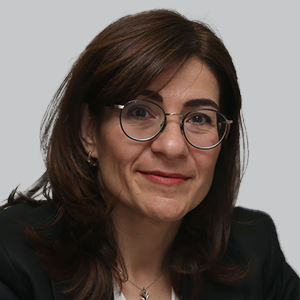News
Article
Alterations in Gylmphatic Activity Not Significant in Different Narcolepsy Types, Correlated With PSG Parameters
Author(s):
Glymphatic function demonstrated no significant difference in patients with type 1 and type 2 narcolepsy in comparison with healthy controls.
Kader K. Oguz, MD

Research from a cohort study of 25 adult patients with narcolepsy showed no significant difference in glymphatic function vs healthy controls (HCs) when using diffusion tensor imaging along perivascular space (DTI-ALPS) index.1 These findings provided new evidence on the alteration of glymphatic activity in patients with narcolepsy, specifically type 1 (NT1) and type 2(NT2), which involves the presence of cataplexy and/or absence of orexin.
All told, the mean DTI-ALPS was not statistically significant between patients with narcolepsy, including both patients with NT1 and NT2, and HCs (all, P >.05). Although, there was a negative correlation observed with DTI-ALPS in NT1 patients with wake after sleep onset (WASO)(R = −.745, P = .013) and percentage of wakefulness (R = −.837, P = .005).
Senior author Kader K. Oguz, MD, faculty of medicine, department of radiology, Hacettepe University, Ankara, Turkey, and colleagues wrote, “Based on these findings, increased wakefulness with fragmentation of sleep are associated with altered glymphatic function in narcoleptic patients and this alteration is possibly more prominent in NT1 patients compared to NT2.”1
There were 14 patients in the study, between 2014 and 2016, that were diagnosed with NT1, and 11 patients diagnosed with NT2 who had polysomnography (PSG) and MRI with DTI from a previous study.2 The study included 15 women and 10 men with the median age as 34 years old (range, 29.5–44.5). The Epworth Sleepiness Scale (ESS) score, sleep latency during multiple sleep latency test (MSLT), sleep efficiency during night PSG, wake after sleep onset (WASO), rapid eye movement (REM) sleep latency during PSG, percentage of non-REM (NREM), and REM sleep and wakefulness during night PSG were used for the recording sleep. For each patient with narcolepsy and HC, the DTI-ALPS index was calculated.
>>READ MORE: Clinician-Based Survey Highlights Challenges in Diagnosing Narcolepsy in Children, Adolescents
Additional findings showed that DTI-ALPS was negatively correlated with the percentage of patients with N1 sleep (R = −.781, P = .005) although it revealed a positive correlation with REM percentage (R = .618, P = .043) in patients with NT2. ESS, WASO, and percentage of wakefulness were significantly higher in patients with NT1 (P <.05). Notably, DTI-ALPS had a negative correlation between PSG parameters and WASO, percentage of wakefulness in NT1, percentage of N1 sleep in NT2. Although DTI-ALPS was positively correlated with REM sleep in NT2. A reduction in DTI-ALPS for patients with NT1 was also observed as it showed a nonstatistically significant tendency in comparison with both patients with NT2 and HCs.
Oguz and colleagues wrote, “RBD/RSWA was documented in most of the patients (n = 21, 84%) in either type of narcolepsy and the comparison of DTI-ALPS showed no difference. CSF orexin levels were unavailable in our cohort but, NT1 patients, who are supposed to have deficient orexin, had a tendency to have slightly lower DTI-ALPS compared to NT2 and HCs, not reaching statistical significance. This finding may raise suspicion on a slightly higher alteration of glymphatic function in NT1 patients.”1
Limitations in the study included the small sample of patients and the design of the retrospective study. In addition, there was not a clear discussion on the effect of PSG findings such as sleep fragmentation and RSWA/RBD since the orexin levels from CSF were unavailable as well as the HCs lacked PSG results. The quality of the night-sleep for patients and HCs before the MRI scan was unavailable even though having the information could reveal the influence of the function of glymphatic system on them.
Oguz et al noted in conclusion, “We believe that our findings add to the literature that glymphatic function disturbance in narcolepsy could be investigated in relation to specific sleep components using DTI-ALPS as an imaging marker. Further studies with larger cohorts including narcolepsy patients with and without RBD/RSWA are needed to reveal the relation between various sleep disorders and glymphatic function.”1
REFERENCES
1. Gumeler E, Aygun E, Tezer FI, Saritas EU, Oguz KK. Assessment of glymphatic function in narcolepsy using DTI-ALPS index. Sleep Med. 2023;101:522-527. doi:10.1016/j.sleep.2022.12.002
2. Tezer FI, Erdal A, Gumusyayla S, Has AC, Gocmen R, Oguz KK. Differences in diffusion tensor imaging changes between narcolepsy with and without cataplexy. Sleep Med. 2018;52:128-133. doi:10.1016/j.sleep.2018.08.022
2 Commerce Drive
Cranbury, NJ 08512
All rights reserved.



